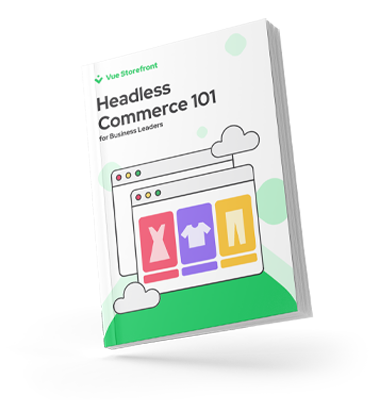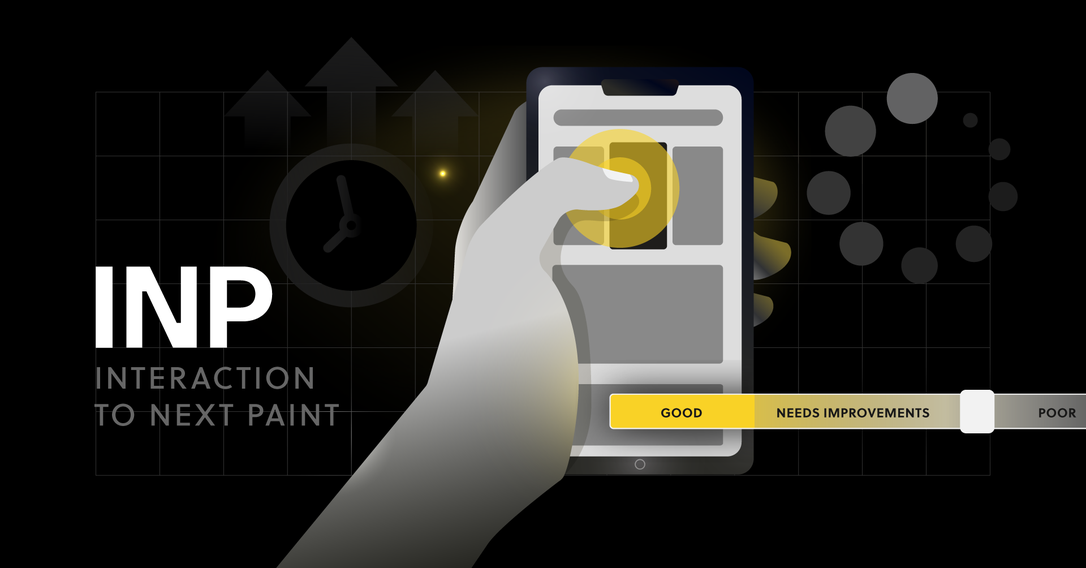6 min
August 1, 2025
Headless on a Traditional E-commerce Platform
Are you interested in moving to headless or composable, but you've already invested in a traditional e-commerce platform? The transition to headless, and if necessary to composable, is easier and simpler than you might think.
As many as 80% of companies without a headless architecture intend to adopt a modular approach in the coming years, and Forbes reports that this technology has already secured over $1.65 billion in funding between 2020-2021. Retailers and e-commerce merchants are therefore not letting anything stop them from discovering new ways to reach customers.
Listen to the audio version of this article.
Let's look at the differences between headless and composable.
What is headless?
Headless is an approach to e-commerce architecture where the frontend, or the presentation layer of a website or application, is separated from the backend, or the commercial functionality.
Headless commerce allows for greater flexibility, scalability, and customization of the user experience across multiple touchpoints, devices, and channels. It's also worth noting that there's a growing emphasis on "composable commerce," which is a modular approach that goes beyond just separating the frontend and backend. It involves combining "best-of-breed" solutions for various functions (e.g., PIM, headless CMS, or OMS), which provides even greater flexibility and freedom in building the platform.
What is composable architecture?
Composable architecture is an approach to software design and development that emphasizes creating applications from modular, interchangeable, and composable elements or microservices.
In a composable architecture, individual services or microservices are designed to be loosely coupled, independently deployable, and able to communicate with each other via standard interfaces or APIs. You can easily compare this to a stack of Lego bricks that can be exchanged, modified, and rearranged.
The composable method therefore allows developers to quickly build and iterate complex applications by assembling (like Lego) ready-to-use components, instead of starting from scratch, which results in greater agility, scalability, and resilience.
What are the benefits of headless commerce?
Personalized customer experiences for maximum conversion
Headless allows you to tailor customer experiences without the barriers that can exist in a traditional e-commerce platform. Since the frontend is separated from the backend, you can change the content layer without disrupting the core infrastructure.
The freedom to create personalized experiences is crucial in today's e-commerce market, where word-of-mouth drives $6 trillion in annual global spending and 13% of all sales. The headless approach helps centralize content and allows you to deploy it anywhere, resulting in faster time-to-market and a better customer experience. In the context of content management, this differs from the limitations often imposed by a traditional CMS, which is tightly coupled to the presentation layer. This is where the power of a headless CMS comes to the forefront, offering flexibility in content distribution.
By centralizing all customer purchasing data, you can use it to personalize recommendations, promotions, and Browse options for a specific channel, creating more relevant offers that result in improved conversion rates in your online store.
Seamless integration
Headless enables the connection of various tools via an API, which facilitates communication between software platforms and promotes fluid connections and data transfers. This flexibility expands the possibilities for data collection and utilization, which is crucial for a dynamic online store.
Consistent omnichannel experience
Headless also helps provide a unified experience across all sales channels by centralizing all customer data and providing a comprehensive API layer that enables frontend developers to feed commercial data into every customer experience.
The ability to add new online channels in an instant provides a significant market advantage, and the role of a headless CMS is invaluable in ensuring consistency across multiple platforms.
Rapid experimentation
Headless commerce allows for experimentation in creating different presentation layers for the user and pricing. You can use headless to launch new features or offers, test discounts or promotions, try out different page layouts, and build captivating customer experiences without interfering with the backend of your online store.
Agility and flexibility, resulting in a shorter time-to-market
Headless Commerce solutions can support new, emerging technologies, enabling marketing teams to quickly launch multiple sites and keep up with constantly changing customer expectations. Headless platforms provide flexibility, allowing for experimentation and innovation without compromising the backend layer.
Transitioning to Headless before Composable
By decoupling the frontend, you gain the flexibility to make "behind-the-scenes" modifications without impacting the user experience. While separating the presentation layer can be a significant technical change, it usually has minimal organizational impact.
The transition to headless can happen gradually. For example, you can replace catalog navigation with a new frontend while keeping the complex checkout process on the old frontend, assuming the e-commerce engine remains the same.
By styling the old and new frontends to ensure smooth operation, you can maintain continuity. Once you've gone headless, breaking down the solution into smaller parts will be easier if you decide to go composable.
You might want to experiment with a headless or composable architecture, but you may have invested in a traditional e-commerce platform or are tied to a long-term contract with a platform-based solution such as SAP, Oracle, HCL, or Adobe.
Migrating to headless with a traditional e-commerce platform is easy and beneficial.
What are the benefits of transitioning to headless before composable?
Whether you just want to try out headless or plan to move to a full composable architecture in the future, we always recommend a gradual approach to such a transition. Moving to headless first reduces the risks associated with introducing major technical changes to your online store.
Here's why moving to headless is beneficial:
By making a small change to your e-commerce solution, you can monitor the effects this change generates and adjust your actions accordingly.
Your company may react unpredictably, for example, by showing resistance to change or encountering unexpected bottlenecks. The headless approach allows you to address these challenges on an ongoing basis first, rather than dealing with all side effects simultaneously.
With the headless approach, you always have a working solution, and for every small change, you have a safe fallback solution if the change fails or takes longer than expected.
Moreover, the benefits of using headless components can be achieved faster, instead of moving directly to composable solutions.
During this process, you can identify components that do not need to be moved to new technologies because the effort outweighs the benefits. This is less likely with a full platform migration, as this conclusion may not be obvious when defining plans.
How to go headless in three simple steps?
Step one: Determine whether to keep or change your e-commerce platform
Small businesses can benefit from introducing APIs and/or microservices to tactically improve specific experiences on an existing platform and keep up with new customer expectations. Medium-sized businesses or enterprises may prefer to move to a more complete and agile SaaS solution for greater scalability and flexibility in the long run.
Step two: Choose a headless frontend
A headless frontend is the best solution if you want to deliver multiple types of content to visitors across different channels and devices. With a headless frontend, you can more easily create content logic that is tailored to each channel, behavior, and desired user experience; while an API will connect the frontend and backend, delivering the right content to the right channels.
Step three: Synchronize the frontend and API interface
Synchronizing the headless frontend is like "attaching a head to it." It's a key aspect of the process, facilitating a seamless system that integrates frontend user experiences and backend commands. If you are migrating from a traditional commerce platform, it's advisable to take small steps rather than diving in headfirst. Start by creating and synchronizing APIs for smaller parts of your headless frontend, such as blog sections or campaign landing pages. Once you gain confidence in the process and initial results, test, optimize, and scale.
Key Takeaways
You can go headless without breaking your contract with a traditional e-commerce platform like SAP, Oracle, or Adobe.
Moving to headless doesn't have to be complicated. With the right partners, it can be done in small steps.
Headless and composable are the future of e-commerce, regardless of your current engine or e-commerce platform.
Headless and composable are the future of e-commerce, and now is a great time to start. Moving to headless or composable doesn't have to be a sudden change; simply decoupling the frontend allows you to reap the benefits. And if you decide on a complete replatforming, much of it is already done.
Original author: Charles Heal, Commercial Director at Vaimo




